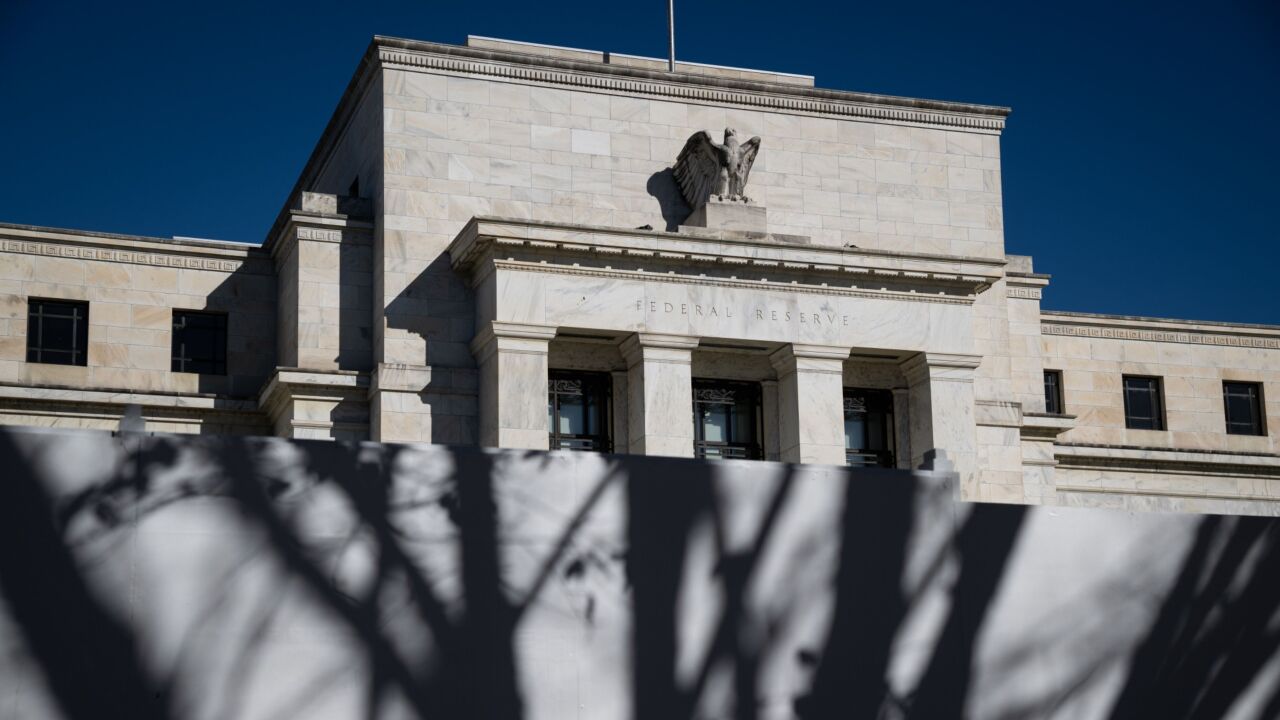Logic would dictate that with the supply of freshly charged-off credit card accounts tightening, prices for new paper would be going up and prices for older accounts worked two or more times post charge-off would be falling. After all, buyers consider fresh paper much more attractive because it has not been worked as extensively.
Surprisingly, that is not the case. Prices for secondary and tertiary chargeoffs are on the rise while prices for fresh paper remain stagnant. Secondary and tertiary accounts are selling for as much as 3 cents on the dollar, compared to about 2 cents in early 2003 and about 1 cent in 2002, according to industry experts. The biggest jump came during 2003's fourth quarter, when average market prices increased 1 cent to 1.5 cents.
In comparison, fresh chargeoffs are commanding between 6.5 cents and 7 cents on the dollar on average, pretty much the same price as two years ago, say industry experts.
Fueling the jump in prices for secondary and tertiary paper has been the growth in the number of companies buying and reselling charged-off accounts. It is not uncommon for issuers to have five to eight bidders on these types of portfolios, compared to three or four in 2000, according to Alfred J. Brothers, executive vice president for Hawthorne, N.Y.-based debt buyer Cavalry Portfolio Services.
New investors seeking an alternative to the stock market are backing many of the new bidders. This influx of capital has helped lower financing costs for buyers in addition to increasing the money supply available to them.
"The secondary and tertiary market is the least developed and so it offers the potential for the best return on investment," says Vernon Fuller, senior vice president for Genesis Financial Solutions, a Beaverton, Ore.-based buyer of credit card chargeoffs. "There is a lot of capital looking for a new home and the returns in this market place look sexy, so it is natural investors go for what they perceive to be the sweet spot."
What is keeping prices in check for fresh paper is that a growing number of card issuers are opting to hold onto fresh chargeoffs and work them in-house or retain a collection agency to work them. Improvements in scoring models, the implementation of more aggressive collections strategies and a need to reduce losses due to bad debt in a sluggish economy are prompting many issuers to retain as much as the top 20% of their newest charged-off accounts and work them in-house. Typically these accounts have the highest collectibility scores and are less expensive to work.
The goal is to achieve a recovery rate equal to or greater than what can be earned by selling accounts immediately after they are charged off. A freshly charged-off account has not posted a payment for 180 to 240 days, has not been scored and not worked by a collections agency.
"If an issuer can earn about 7 cents or more working fresh paper in-house and then sell it for 3 cents later, it makes sense to do it, because they are earning a higher return than if they sold from the get-go," says Fuller. "A lot more issuers are willing to hold on to fresh paper and work it differently until it reaches secondary status."
More Variety
Total sales of charged-off credit card debt in 2003 were projected to be about $43 billion, compared to $36 billion in 2002, up 19%, according to Louis C. DiPalma, managing director for Keefe, Bruyette & Woods Inc., a New York-based investment-banking firm.
"The market for charged-off credit card debt is huge," says DiPalma. "About 6% of accounts a year charge off and half of that typically sells."
Overall, 2003 U.S. bad-debt sales by card issuers, insurers, utilities and others were expected to range from $72 billion to $75 billion (chart, page 24).
Historically, cards have represented about 60% or more of total volume, but that figure is expected to trend downward slightly in coming years as issuers hold on longer to fresh paper and exhaust their supply of warehoused debt of years-old chargeoffs. Meanwhile, the amount of non-card chargeoffs for sale has increased.
"There is a lot of growth in total sales being fueled by big creditors outside the card business that are selling their debt," says Brothers. "There are a lot of big creditors that have not sold, but cards still make up a huge portion of the market."
If anything, the total volume being sold by card issuers is not decreasing; rather, the size of the portfolios being sold is smaller. The average size of portfolios being sold on a direct basis is about $27 million, compared to about $85 million 10 years ago, says Dave Ludwig, president of St. Louis-based National Loan Exchange (NLEX).
"We are seeing the same overall volume, but in smaller chunks," says Ludwig. "We still sell $300 million portfolios, but we also sell a lot of $5 million to $10 million portfolios."
Much of the decline has to do with issuers having sold most of their warehoused paper, he adds.
'A Harder Look'
Many theories abound for why issuers are selling smaller bad-debt portfolios. One is that issuers are only selling bad debt when it is the best option for recovering money lost on the account. For much of the 1990s, issuers sold bad debt as a way to make budget. Now credit card issuers are becoming more sophisticated in how they manage chargeoff recoveries.
"Issuers are taking a harder look at their freshly charged-off accounts and a lot of that is being driven by improvements in scoring," explains Dennis Hammond, president of Santa Fe Springs, Calif.-based The Debt Marketplace Inc. "Everyone wants to squeeze as much out of an account as they can before selling it in order to maximize returns. If issuers are holding back on sales, it is apparent they don't think they are getting the desired return."
Improved scoring models that suggest treatment strategies for an account based on behavior patterns since the cardholder has become delinquent are a key driver for why issuers are willing to retain fresh chargeoffs longer. In many cases, post-chargeoff scoring applications can boost recovery rates as much as 20%.
Another strategy issuers are utilizing with greater frequency is to turn a charged-off account over to a collections attorney earlier in its life cycle. The advantage of doing so is that most debtors are apt to respond to a letter from an attorney, rather than risk a lien being placed on their assets or having their wages garnished. In instances where the debtor does not have the financial wherewithal to pay off the debt, he will usually reach a settlement ("Collection Attorneys Make Their Mark," October 2003).
While issuers are holding onto fresh chargeoffs longer, thereby shrinking the average size of the portfolios they put on the block, they are not the only sellers of bad debt carving up portfolios. Resellers, buyers who purchase an account from an issuer then resell it rather than work it, are breaking up portfolios more frequently on a state-by-state basis.
The Role of Resellers
Many of the new bad-debt buyers are small outfits that work portfolios on an in-state basis. About one-third of all states require owners of bad debt to be licensed to collect on the accounts, hence, resellers make it easier for buyers to acquire accounts in states not requiring a license. In comparison, collections agencies working a national portfolio on a contingency basis are required by each state to have a license.
Resellers are more willing to separate these accounts from the rest of the portfolio than issuers are because the rate of return can more easily justify the effort. "Issuers really don't want to be selling 10 to 12 portfolios," says Ludwig.
The advantage to resellers segmenting portfolios on a state-by-state basis is that prices for secondary and tertiary bad debt can exceed prices for national portfolios. The price for accounts sold state by state can be influenced by a state's collections laws and the quality of accounts in the portfolio.
Accounts in Texas, Florida and California are often broken out from national portfolios and resold. These states have collections laws less favorable to the owner of the debt, which typically drives down the price per account, since recovery rates tend to be about half the national average. Some buyers are more willing to acquire the paper at a cut-rate price and bet they can achieve an above-average return.
In addition, these states are among the most populous, which means accounts from them can comprise as much as 50% of a national portfolio.
"There is so much paper in these states, you can't always ignore them when buying a portfolio," says Fuller of Genesis, adding that "there are ways to work it profitably."
Norfolk, Va.-based bad-debt buyer and collections specialist Portfolio Recovery Associates Inc., for example, has most of its account holdings in these three states.
As of last Sept. 30, 31% of the accounts held by PRA were in Texas. California was PRA's second-largest market, with 8% of accounts. Florida ranked third at 4% of accounts held.
Credit card accounts make up the majority of bad debt owned by PRA, representing $5.52 billion, or 75%, of the company's $7.40 billion in receivables. Outstanding balances bought from general-purpose card issuers totaled $3.78 billion, and balances from private-label issuers totaled $1.74 billion as of Sept. 30. Debt purchased from consumer-finance companies totaled $1.58 billion, and debt from auto-finance companies totaled $294 million. Executives from PRA were unavailable for comment.
"Breaking up and reselling accounts is good for the industry because it means accounts are going to buyers who have the expertise and skill to work those accounts best," says KBW's DiPalma.
Issuers want to deal with credible resellers because they have a stake in how an account is worked after it is sold, he adds. Buyers who violate collections laws can soil the reputation of the issuer that originally owned the account.
"There is risk associated with selling bad debt, which is why issuers look at debt buyers as partners," says Louise Epstein, president of Austin, Texas-based Chargeoff Clearinghouse. "Buyers must be able to properly service a portfolio."
As a public company, PRA serves as a barometer for the bad-debt market. The company's success since its late 2002 initial public offering is prompting other debt buyers to consider IPOs, according to industry experts. The advantage is more access to capital that can fuel business expansion.
Technology Investments
Such capital, whether from public or private-equity sources, today is being allocated to more than just buying bad debt; it is also an investment in operating systems to work accounts more efficiently and achieve the highest returns. Anything less is unacceptable to shareholders. Systems in which debt buyers are investing include skip-tracing databases, scoring models and workflow systems that automate collection strategies and allow users to work more revenue-yielding accounts without necessarily having to increase staff.
"A lot of buyers have invested heavily in resources to lower operating costs," says DiPalma.
The move toward publicly traded debt buyers also is expected to be a boon for debt sellers, because it means more capital is flowing into the marketplace. "Better capitalized companies are more stable and that is good for the seller, because they want to deal with companies they trust," says Cavalry's Brothers.
With cheaper capital flowing into the market and better recovery tools available, bad-debt buyers today are in a better to position to pay higher prices for secondary and tertiary paper without eroding their margins.
-
The retail giants are kicking the tires on their own currencies. The potential prize is a way to reimagine prepaid cards and gain a key position as new forms of artificial intelligence-powered payments take off.
June 13 -
Primis Bank plans to sell an undisclosed amount of its 19% ownership stake in Panacea Financial, a digital-only lender focusing on medical professionals and veterinarians. The deal should yield $22 million.
June 13 -
The fintech and nonprofit join others, including AARP and the ICBA, in working to raise awareness of the financial risks of Alzheimer's and dementia.
June 13 -
The impact of President Trump's tariffs is the top concern for most middle-market American businesses, a new KeyBank survey found. But these firms also view the scrambled landscape as a chance to innovate and restructure.
June 13 -
The Federal Reserve Board banned a former relationship banker in Arkansas after he was caught stealing customer funds; Benchmark Federal Credit Union plans to merge with Franklin Mint Federal Credit Union to form a $2.1 billion-asset institution; Robin Vince, CEO of Bank of New York Mellon since 2022, has been elected chairman of the board; and more in this week's banking news roundup.
June 13 -
In USAA's battle with banks over mobile deposit technology, which it says it invented, a bank has scored a rare victory.
June 13





